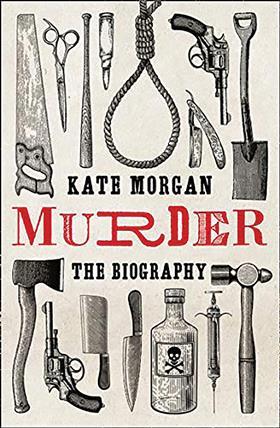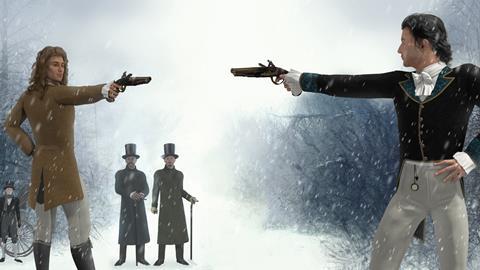Murder: The Biography
Kate Morgan
£16.99, Mudlark
★★★★✩
A murderer’s weapon of choice is artfully depicted at the start of each chapter of lawyer Kate Morgan’s history of homicide, providing a striking motif in this gut-wrenching history. As well as a brooding text font for headings, Morgan’s punchy writing tears into our perennial fascination with murder. She cites George Orwell’s 1946 essay Decline of the English Murder, in which he ‘was adamant that murder had peaked in a golden age between 1850 and 1925’. In chronicling across the ages how the law has evolved in response to murder, Morgan disproves Orwell’s theory while also attempting to explain what makes murder so compelling. ‘Aside from its dark appeal, the act of murder itself is a blank canvas onto which we can project all manner of meanings,’ she writes.

Morgan explores the origins of the actual term ‘murder’, an act so unspeakable that in bygone years was the only crime that justified taking a life. ‘Around the 10th century, from a primordial soup of mud, woad, Old English and bastardised French, the concept of mordor emerged,’ Morgan writes. There was also the French word mordre and morth in German and, as Morgan explains, ‘these denoted a killing with an element of secrecy of concealment’. However, from the 13th century, legal texts identified homicides as either voluntarium (intentional) or casuale (accidental).
Murder’s modern-day connotation can be ascribed to jurist Sir Edward Coke, who wrote Institutes of the Lawes of England in the first half of the 17th century. Morgan stresses that Coke’s pontification on bloody murder and manslaughter still holds true to this day: ‘Murder is where a man of sound memory, and in the age of discretion, unlawfully killeth within any county of the realm any reasonable creature in rerum natura under the King’s peace, with malice afterthought, either expressed by the party or implied by law.’
Trial by battle
Morgan goes back to Gundobad, King of the Burgundians, to explore trial by battle or combat. There was a celestial dimension to the way those trials were conducted, for ‘the fighting continued until the stars appeared in the evening sky. If, by this time the defendant was still standing – or had killed his opponent – then he was deemed victorious and acquitted. But if the defendant gave up the fight before the stars rose, he was to be executed without the possibility of a reprieve’.
As English law nurtured court trials in the 13th and 14th centuries, this cut-throat form of justice fell into obsolescence and both Oliver Cromwell and Charles II prohibited duels. Coke delivered his own measured view: ‘A duel fought in “hot blood”, where the participants immediately take up weapons upon whatever slight has been given or taken and one proceeds to kill the other, cannot be murder… But where arrangements are made to fight at a subsequent hour or day, when the blood has had time to cool, then that premeditation must make it murder.’
When woodturner Daniel M’Naghten shot Edward Drummond, the private secretary to the prime minister, little did he know that his name would pass into legal lore. Drummond subsequently died. A jury found M’Naghten not guilty of murder on the ground of insanity; he was held at Bethlem. When the Lords affirmed the grounds of insanity, the so-called M’Naghten rules established a benchmark for insanity that is still applied today: ‘To establish a defence on the ground of insanity, it must be clearly proved that, at the time of the committing of the act, the party accused was labouring under such a defect of reason, from disease of the mind...’
Corporate spotlight
Morgan’s book is much more than a wide-ranging history. It becomes more polemical when she makes the epochal jump into the 1980s in the chapter ‘The Body Corporate’. Here, she writes about the loss of life in disasters such as the King’s Cross underground station fire, the rail crash at Clapham, the East Midlands Airport plane crash, and the sinking of the Thames pleasure cruiser Marchioness.
Morgan offers a sombre reminder of the reach of the law: ‘None of the horrific disasters that filled the airwaves over such a short period of time at the end of the decade resulted in prosecutions, even under the health and safety legislation that had been part of the law since the mid-1970s.’ This trenchant commentary is one of many readable passages in Morgan’s riveting history.
Nicholas Goodman is a sub-editor at the Law Society Gazette






























No comments yet